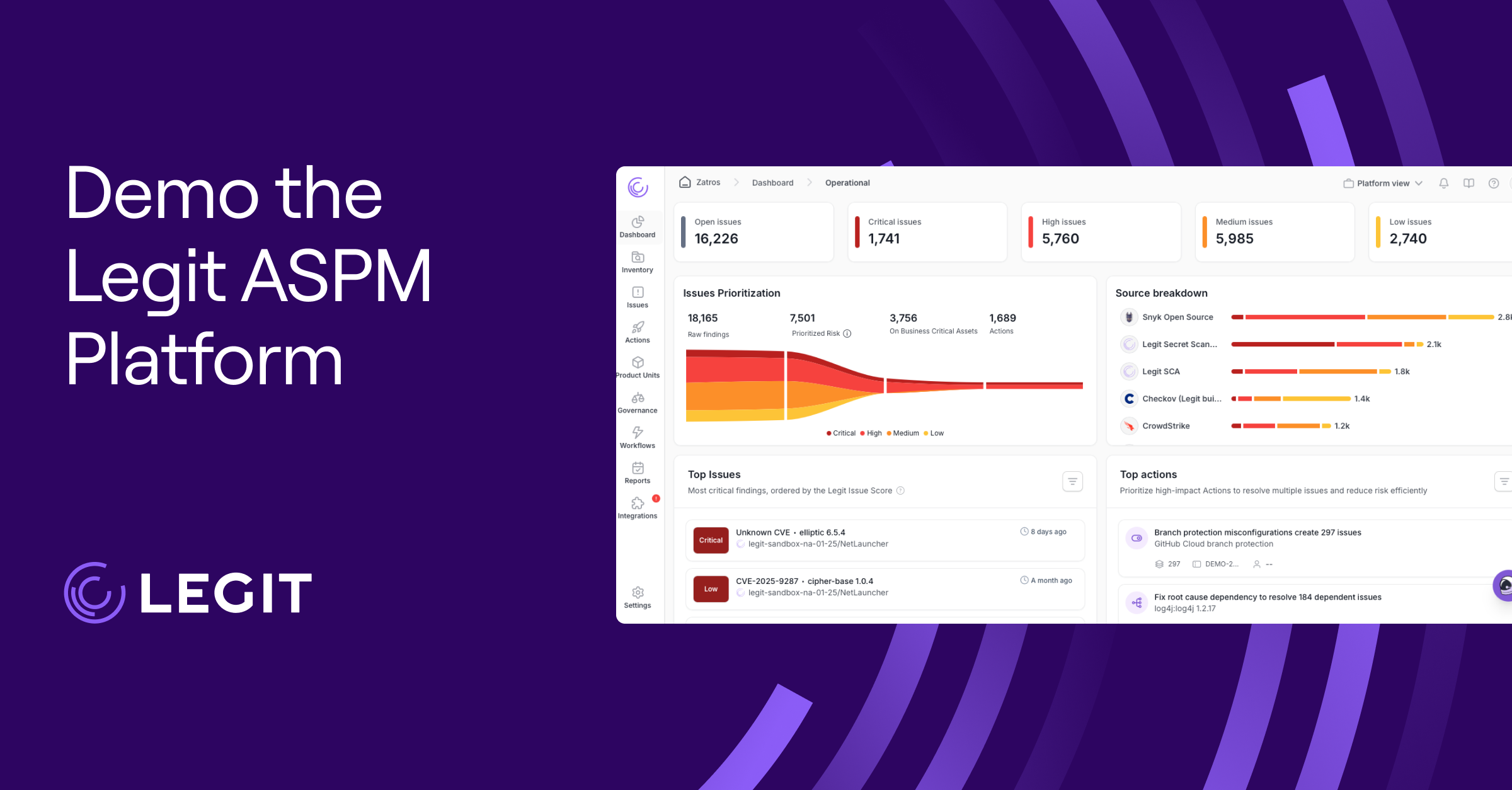When people hear “CIA cybersecurity,” they might think of spies and intelligence agencies, but it means something entirely different in security circles. It refers to the CIA triad.
This simple but powerful framework continues to shape how tech and infosec teams protect data and reduce risk. Understanding its relevance, challenges, and importance is key to tight security.
What Is the CIA Triad in Cybersecurity?
The CIA triad is a security framework that you can use to evaluate how well your organization protects its information across people, processes, and technology. The three principles—confidentiality, integrity, and availability—are the baseline expectations for any effective cybersecurity strategy.
When you apply the CIA triad, you ask three questions: Who has access to this data? Has it been tampered with? And will it be there when we need it?
The CIA triad of cybersecurity is the foundation for building secure architectures, enforcing policies, and responding to incidents across environments. It’s also central to strengthening security posture over time.
Here’s a look at the three principles:
1. Confidentiality
Confidentiality means keeping sensitive information private and restricting access based on roles and needs, not convenience. Attackers often test confidentiality through phishing attempts, stolen credentials, and man-in-the-middle attacks.
Practices like data encryption and multi-factor authentication (MFA) can reduce the risk. But it’s not just about technology—users also play a role. A weak password or misconfigured permission can punch a hole in even the most well-designed information security setup.
2. Integrity
Integrity means you can trust your data. Whether it's software code or audit logs, the content must be correct and unaltered, with no hidden edits or unauthorized changes. Threats to integrity in computer security can manifest as SQL injections, tampered backups, or overprivileged users.
You can detect unauthorized changes with methods like hashing, file integrity monitoring, digital signatures, and version history. Application security posture management tools also enhance data integrity by tracking changes across development environments.
3. Availability
Availability keeps data and systems accessible to authorized users, making sure they’re available when needed.
Whether it’s a service outage, a ransomware attack, or a natural disaster, downtime can be costly. To stay resilient, use redundant systems and real-time monitoring. Firewalls and incident response plans also help protect against data breaches and disruptions that impact availability.
Why Is the CIA Triad Important?
When you build or assess a security strategy, the CIA triad allows you to stay grounded in what matters. It’s a way to pressure-test your decisions. Are you limiting exposure to sensitive data? Can you trust your systems to produce unaltered results? And when something breaks, will the right people still have access to what they need?
The triad offers a way to safeguard your systems and reduce risk from multiple directions by focusing on confidentiality, integrity, and availability. It also makes it easier to spot gaps. For example, maybe your access controls are airtight, but you don’t have a disaster recovery plan. The triad forces you to think holistically—not just reactively.
It also helps teams in security, engineering, and DevOps stay aligned. By framing risk through confidentiality, integrity, and availability, the CIA triad gives everyone, from developers to CISOs, a shared language for prioritizing security issues. That clarity helps reduce friction and leads to faster, more focused decisions.
As your environment grows, the triad also becomes more valuable. With more systems, users, and code moving through your pipeline, it's easy to lose track of what’s protected and where new vulnerabilities might appear. Using the CIA model to guide reviews and planning helps you stay proactive even during rapid scaling.
It also plays a significant role in compliance. Security frameworks like ISO/IEC 27001 and the information security management systems (ISMS) build on the principles of the CIA triad. When you follow them, you align with global standards that regulators and auditors expect to see. That’s why they often play a central role in security audits and governance assessments.
CIA Triad Challenges
Applying the CIA triad isn’t as simple as checking off three boxes. The model is foundational, but applying it, especially in dynamic environments, comes with real-world obstacles. Here are some of the most common challenges:
- Balancing all three principles without trade-offs: It’s easy to over-optimize for one pillar while weakening another. For example, too much availability puts confidentiality at risk. Keeping them in balance requires constant evaluation.
- Scaling securely with large data volumes: The more data you collect and store, the harder it becomes to manage confidentiality and ensure uptime. Storage, backup, and compliance costs can spike fast.
- Dealing with fragmented systems and third-party services: Hybrid and multi-cloud environments and an expanding vendor ecosystem make it harder to enforce consistent CIA controls. Software supply chain risks make these challenges even more pronounced, as indirect access points often become high-risk entryways.
- Relying on outdated models alone: While relevant, the CIA triad isn’t enough to handle every modern threat. Pair it with additional principles like accountability, auditability, and non-repudiation to support cloud, IoT, and AI-driven risk landscapes.
- Human error and insider threats: Misconfiguration or oversight can compromise confidentiality or data integrity, even with the right tools. Social engineering and insider misuse still account for many security incidents. Secure development practices and regular training reduce avoidable mistakes early in the lifecycle.
- Lack of visibility and tooling: Without centralized monitoring and automated validation, it’s tough to know when a breach of confidentiality, integrity, or availability has occurred.
- Adapting to evolving threats: From deepfakes to software supply chain attacks, new risks constantly emerge that test the limits of traditional security frameworks. Staying secure means evolving your cybersecurity strategy as fast as the threat landscape changes.
CIA Triad FAQs
What’s the DAD Triad?
DAD is the inverse of the CIA. It stands for disclosure, alteration, and denial—three things security teams aim to prevent. While the CIA triad focuses on maintaining security, DAD shows how attackers can break those principles.
What’s an Example of Integrity in the CIA Triad?
You might use checksums or digital signatures to verify that no one tampered with a file during transmission. In development, version control systems maintain data integrity by tracking changes and allowing you to reverse unauthorized or accidental edits to source code.
What’s an Example of a CIA Triad Violation?
A ransomware attack is a good example. It locks you out of your systems, which violates availability. If the attacker steals or corrupts data, that also impacts confidentiality and integrity. Many incidents don’t just hit one pillar—they affect multiple.
How Do You Protect the CIA triad?
Start by implementing the right controls for each pillar. Use encryption and access control for confidentiality, hashing and logging for integrity, and backup and recovery for availability. Then, layer on continuous monitoring, regular testing, and employee training to keep protections active and up to date.
Uphold the CIA Triad With Legit Security
Legit Security helps you uphold the CIA triad across the SDLC by providing visibility and automation from code to the cloud. Enforce confidentiality through role-based access, detect threats to integrity with tamper-resistant audit trails and real-time change monitoring, and support availability with continuous assurance that your critical systems remain secure and deployable.
With Legit, security isn't an afterthought. You build it from scratch. Learn more about why Legit Security is reshaping cybersecurity for modern development teams.
Download our new whitepaper.


